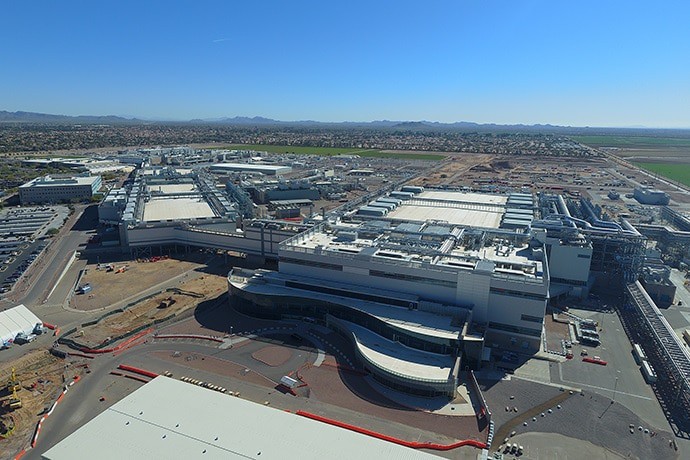Intel has announced its plans for the future. The company is betting big on the production of 7nm chips and wants to make its chip factories available to other companies too. For this, the company wants to build more chip factories, starting with two factories in the American state of Arizona. Intel did confirm it will expand its capacity in Europe as well, detailed announcements of new European factories will come later this year.
Intel’s plans are set out in a press release. In it, the company says that the developments of the 7nm process are going well. The company is using the new EUV-technique. In the second quarter of 2021, Intel expects to begin the final design phase of the compute tile of the upcoming Meteor Lake generation. This suggests that Meteor Lake chips will consist of multiple parts, similar to the technique used by AMD with its Zen chips.
More production capacity
The company is looking to deploy its 7nm capability on a large scale. The technology will not only be used for its own products, but third parties will also be able to buy production capacity. For example to produce new ARM-chips, the capacity is not limited to x86-chips. This extra capacity is intended to be located in both the US and Europe. This means that the company wants to build new factories.
Most of Intel’s factories are already in the US, but the company wants to add two more. These chip factories will be located in the state of Arizona, after an investment of about 20 billion dollars. In Europe, Intel has only one chip factory, the one in Ireland. It is likely that Intel wants to produce more chips in Europe in the long run, especially since the EU wants to bring more technical developments to the continent. However, Intel has not yet made any concrete proposals in this area.
Cooperation with third parties
Intel does, however, want to move away from its complete dependence on its own factories. The company wants to strengthen its ties with other chipmakers and outsource some of its production. Intel specifically mentions communication equipment, chipsets and graphics chips. It seems like the production of its compute cores will remain in-house.
Furthermore, Intel has announced a collaboration with IBM. The two companies want to delve into the next generation of techniques used for chip design. Further details about the collaboration remain undisclosed.
Intel sums up its vision in what it calls IDM 2.0. By that, the company means it is an evolution of its integrated device manufacturing model.
“We are setting a course for a new era of innovation and product leadership at Intel,” said Gelsinger, Intel’s new CEO. “Intel is the only company with the depth and breadth of software, silicon and platforms, packaging, and process with at-scale manufacturing customers can depend on for their next-generation innovations. IDM 2.0 is an elegant strategy that only Intel can deliver – and it’s a winning formula. We will use it to design the best products and manufacture them in the best way possible for every category we compete in.”
Positive developments
The developments are positive news for Intel. The company has had difficulty in recent years in keeping up with processor development. The lead that the company had over its competitors has now more than closed. The biggest problem was in the development of its 10nm process. By now, the production of 10nm processors is slowly but surely starting to take off and the step to 7 nanometres is important in order not to lag behind the competition.
New CEO with engineering background
Pat Gelsinger became the CEO of Intel last month. Prior to that, he spent eight years at the helm of VMware, but previously worked at Intel as a chip designer. It’s a significant switch for Intel, which in recent years has had a few CEOs who were more knowledgeable about finance than chip design.
